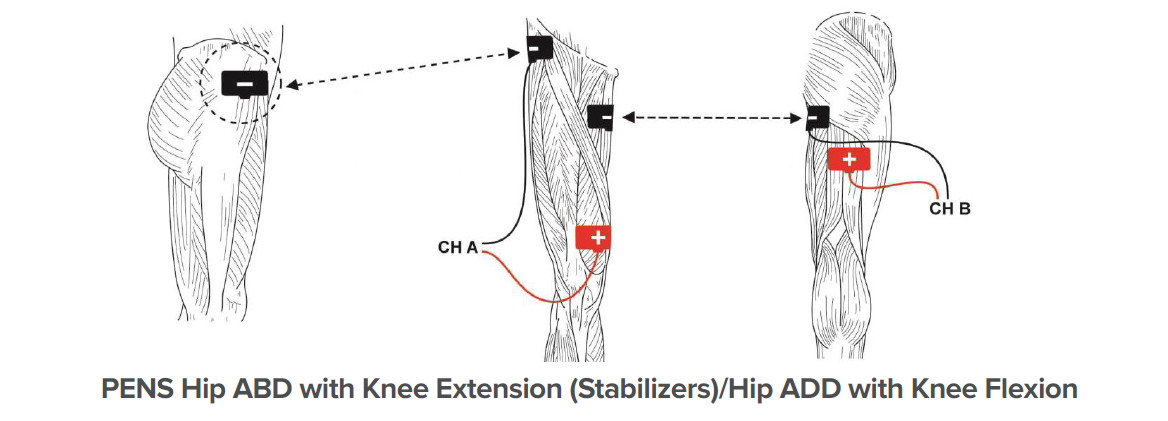- A vital function of the external rotators is that they prevent internal rotation and help stabilize the hip during single leg stance and deceleration activities. They have also proven effective in mitigating the risk of patellofemoral and ACL injuries.1
- In patients one year post total knee arthroplasty (TKA), quadriceps weakness and functional limitations during daily tasks such as walking and stair climbing were found during biomechanical analysis. These individuals demonstrated compensatory movement strategies that reduced loading on the surgical limb by increasing hip external rotation and decreasing knee flexion, resulting in decreased quadriceps force, and decreased hip abductor force.2
- A single treatment of patterned electrical neuromuscular stimulation (PENS) increased muscle activation, improved lower extremity kinematics during functional tasks, and decreased pain.3
- Patients with patellofemoral pain who received PENS treatment had an immediate improvement in gluteus medius activation and a reduction in pain during functional tasks.4
PENS for Hip Strengthening and Stabilization
PENS hip protocols can strengthen and normalize the firing of the hip musculature to assist in the stabilization of the hip during functional activity.


References:
1. Boling MC, Padua DA, Marshall SW, Guskiewicz K, Pyne S, Beutler A: A Prospective Investigation of Biomechanical Risk Factors for Patellofemoral Pain Syndrome:
The Joint Undertaking to Monitor and Prevent ACL Injury (Jump-ACL) Cohort. American Journal of Sports Medicine Nov. 37 (11) 2108-16, 2009.
2. Gaffney BM, Harris MD, Davidson BS, Stevens-Lapsley JE, Christiansen CL, Shelburne KB: Multi-Joint Compensatory Effects of Unilateral Total Knee Arthroplasty During High-Demand Tasks. Ann Biomed Eng. 2016 Aug; 44(8):2529-41. doi: 10.1007/s10439-015-1524-z. Epub 2015 Dec 2014.
3. Glaviano NR, Huntsman S, Dembeck A, Hart JM, Saliba S: Improvements in kinematics, muscle activity and pain during functional tasks in females with patellofemoral pain following a single patterned electrical stimulation treatment. Clin Biomech (Bristol, Avon). Feb; 32:20-7, 2016.
4. Glaviano NR, Saliba SA: Immediate Effect of Patterned Electrical Neuromuscular Stimulation on Pain and Muscle Activation in Individuals with Patellofemoral Pain.
J Athl Train. Feb;51(2):118-28, 2016.
